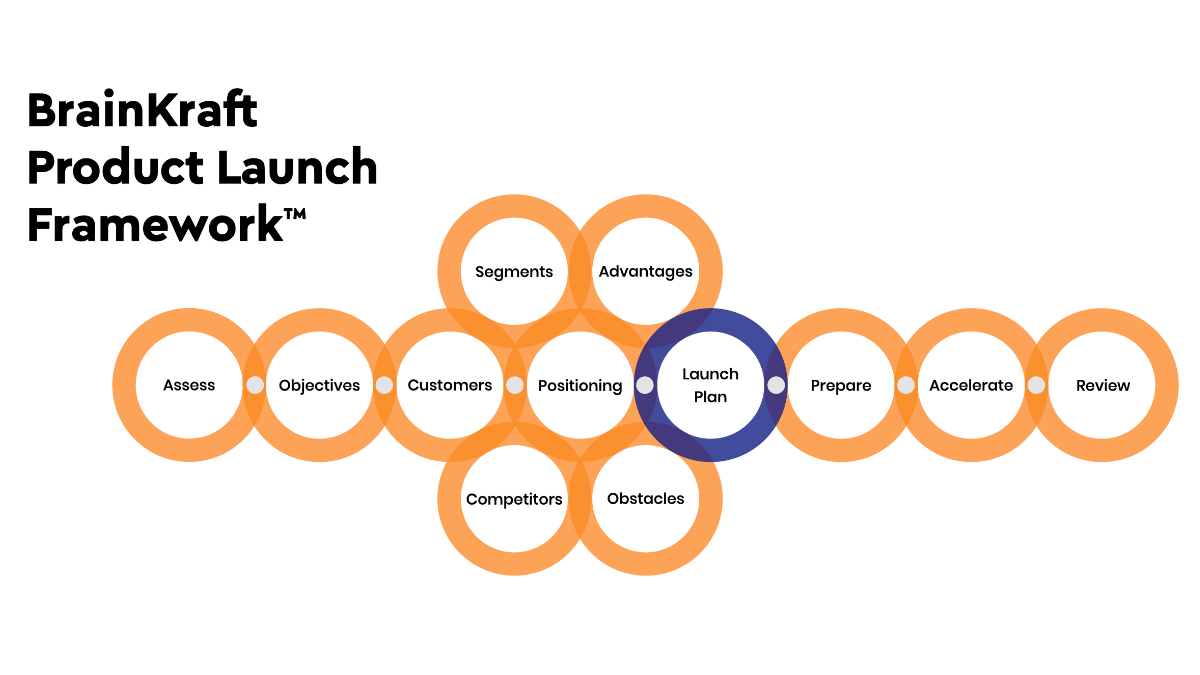There are a lot of reasons product launches fail. You may not have the right product, or maybe execution falls short because of imperfect coordination or a general lack of communication.
Dave Daniels, an expert on product launches, says that the #1 mistake that leads to launch failure is failing to define what launch success looks like. “If there’s one thing I want companies to think about, it’s defining what success looks like for a launch,” he says. “Most of the time, they don’t quantify it or even put a timeframe around it. They just keep throwing stuff at it, hoping something sticks.”
Dave’s opinion on the matter counts for a lot. He has had a lot of experience with launches from a variety of perspectives throughout his career. He started out as a developer, coding and managing development teams. From there, he transitioned into product management and product marketing. It was while he was running a small private equity firm that he developed something he called a “launch clinic,” and later he became a product marketing subject matter expert at Pragmatic Institute, one of the world’s largest and most-respected product and data training companies.
But it wasn’t until his twin daughters brought home a plate of Krispy Kreme donuts that Dave had the spark of inspiration for what would become the BrainKraft Product Launch FrameworkTM. “My girls put the donuts on the kitchen island, and I saw all these glazed and chocolate donuts overlapping on the plate,” he recalls. “I immediately thought, ‘That’s it!’ I sat down and started playing with circular images, and eventually sketched out the first iteration of the Product Launch Framework.”
Today, BrainKraft helps B2B companies develop the skills and processes to plan and execute a successful product launch. Dave and his team provide a framework, training courses, and coaching services. He joined me on the Blindspots Podcast to talk about his unique framework and how it helps companies address all the different critical areas that ultimately determine whether a launch succeeds or fails.

Getting Started: Assessment and Objectives
The first two steps in the Product Launch Framework might seem obvious and like something you can check off the list quickly, but they actually merit a careful and intentional approach.
“The first ‘donut,’ focuses on organizing your launch team—getting the right people in place and making sure each person understands their role,” says Dave. “But it’s also about understanding and assessing initial launch risk.”
Launch risk deals primarily with whether you are responding to demand or creating it. “It’s fine to be a disruptor and want to make the world a better place,” Dave says. “But you have to know that changing the world will be costly. It will take a lot of resources, and it will take time.” Dave encourages companies to consider all the options before striking out into completely new territory.
He uses the analogy of grocery store aisles to explain, “Is your product something new that fits in an existing aisle, or is it so different that the grocer needs to create a whole new aisle for it?” While a lot of startups want to be so innovative that they warrant a new aisle, that’s a strategy that demands additional effort and creates additional risk. If you’re in a separate aisle, it’s harder to get shoppers’ attention. When you’re a new product in an aisle where people are already shopping, it’s much easier to get in front of those shoppers and grab their interest.
“It’s like when cars first launched,” says Dave. “They didn’t call them automobiles. They called them horseless carriages. That name allowed them to tap into a category people already understood.”
Once you’ve assembled your team, analyzed your launch risk, and decided on a path (existing aisle or new aisle), it’s time to set objectives for your launch. You have to ground these objectives in a deep understanding of stakeholder expectations, and then translate them into quantifiable goals. Dave recommends using the objectives and key results (OKR) approach because it works so well for cross-functional projects like a product launch.
Building Your Plan: Customers, Segments, Competitors, Positioning, and More
As you develop your launch plan, there are six areas that need some research and exploration.
🌟 Customers
Identifying your ideal customer is critical to planning a successful launch. “You are looking for patterns in the data,” Dave says. “You want to know who you’re going after—what attributes can you use to identify them, how do they act and feel?” You built your product for a reason, and that reason was likely tied to solving a problem for a specific person. Do the research so you can clearly articulate exactly who this person is.
➗ Market Segments
Dave finds that customer research is instrumental in guiding research on market segments. Your research in this area should help you answer a wide range of questions:
- How big are your target markets?
- Are they growing or shrinking?
- Are they underserved, over served, or adequately served?
- How do people in this market segment make buying decisions?
- Who is involved in making the buying decision?
- What motivates people in this market to consider a purchase?
- What buying criteria does this market care about/not care about?
Dave notes that this research doesn’t have to be a multi-year project. “You just want to do enough to get a starting point,” he says. “You want to put down roots, and then continue with ongoing, proactive research that you can feed into the business and refine as you go along.”
🕵️ Competitive Landscape
“We tend to think about competitors as being other companies that make a product similar to the one we make,” says Dave. “But that’s the wrong way to look at it. The right way is to think about who else can solve the problem you’re solving. That might be with a product or it might be with education, skills development, technology, or services.”
Determining who is in your competitive set requires really getting into the heads of your buyers so you can understand what types of solutions they would consider. From there, you can do additional research to identify specific competitors based on those criteria.
🏌️ Positioning
Building on the research you’ve done on customers, markets, and competitors, you can then start to establish the unique value proposition that will position you for success. Dave is a big fan of using win/loss interviews to uncover insights in this area. He recommends adding two questions to your win/loss boilerplate:
- What do you think was special about us? (Note: It’s important to use the word “special” here.)
- Why was that important to you?
You can ask those same questions about competitors when you lose a deal. In either instance, these two questions will provide you with some valuable intelligence as you start to see patterns in the responses. Ultimately, the answers you get will help you shape positioning that clearly demonstrates your unique value proposition in the market.
🎳 Advantages & Obstacles
Finally, you want to take a good, hard look at the advantages you have and obstacles you face with your particular launch. Each launch has its own set of considerations. “The important thing is not to over-inflate your advantages or underestimate your obstacles,” Dave says. “You want to use them as a point of leverage.” And remember that a launch is not static. You will continue to learn new things throughout the process. You will discover new obstacles that you have to remove and new advantages that you can leverage.
Seeing It Through: Prepare, Accelerate, Review
Beyond the planning phase of BrainKraft’s Product Launch Framework, there are three additional steps in the process. The Prepare step is all about preparing your organization, market, and partners for launch. It includes identifying readiness gaps and creating plans to close those gaps. Once you’ve launched, your focus should turn to Acceleration. This involves tracking the metrics you built into your plan to determine if you are heading toward or away from your launch objective (and make adjustments accordingly).
Finally, when the launch is officially over, the Review step lets you and your extended team (including different functional groups in your own organization and outside partners) reflect on the experience and talk about what worked and what didn’t, who the heroes were, and what you learned. This is an opportunity to stop and breathe, and also to document everything before you head off to the next launch project.
Ready, Set, Launch!
Using a proven framework to plan, manage, and assess your product launch is a powerful way to ensure the highest levels of efficiency, effectiveness, and success. As Dave has learned over many years of experience, being really intentional and strategic about planning and executing your launch pays huge short- and long-term dividends. A launch is never something you want to ad lib. It is, after all, your only chance to make a first impression.
Luckily for B2B businesses of all kinds, BrainKraft is standing by with a wealth of knowledge and resources. If you’d like to learn more, you can listen to the full episode of the Blindspots Spots Podcast or check out the BrainKraft website. You might also want to keep an eye out for Dave’s upcoming book, tentatively titled The Essential Guide to the Product Launch (due out early in 2022).
Happy launching!
Want more episodes of Blindspots?
Join Ryan Sorley in thought-provoking conversations with subject matter experts to help product marketers address those nagging go-to-market Blindspots. Subscribe on Apple Podcasts, Spotify, Google, or listen on our website.

